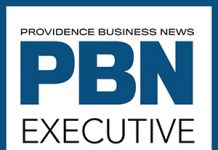WASHINGTON – The index of U.S. leading economic indicators increased more than forecast in June as historically low borrowing costs and a rebound in housing propelled growth.
The Conference Board’s index, a measure of the outlook for the next three to six months, rose 0.6 percent after a 0.8 percent increase in May that was larger than previously estimated, the New York-based group said Thursday.
An improving job market, still-low interest rates and easing access to credit are contributing to gains in housing that are helping the economy overcome weakness in business investment and manufacturing. A slump in stocks last month caused by concerns over slowing growth in China and Greece’s debt crisis prevented the index from rising even more.
The increase in June is “pointing to continued strength in the economic outlook for the remainder of the year,” Ataman Ozyildirim, an economist at the Conference Board, said in a statement.
The median forecast of 41 economists surveyed by Bloomberg called for a 0.3 percent advance. Estimates ranged from increases of 0.1 percent to 0.6 percent.
Six of the 10 indicators in the Conference Board’s measure contributed to the June increase, led by the spread between long- and short-term interest rates and building permits. Three were little changed and only one, stocks, declined.
The group’s index of coincident indicators, which tracks current economic activity, increased 0.2 percent in June. The gauge measures payrolls, incomes, sales and production.
The index of lagging indicators rose 0.7 percent.
Employment climbs
Steady increases in employment have been a bright spot for demand in the first half of 2015. Employers have added an average 208,330 jobs a month so far this year after a 259,670 average in 2014 that was the best since 1999.
Labor market healing has been slow to translate to consumption and factory orders. A strong dollar and lagging overseas prospects still hobble U.S. manufacturers, while consumers’ willingness to spend has been uneven. Retail sales unexpectedly declined in June.
Gross domestic product in the U.S. contracted at a 0.2 percent annualized rate in the three months ended March, the slowest pace in a year, according to Commerce Department data. Economists project GDP accelerated to a 2.7 percent pace from April through June, according to a Bloomberg survey ahead of the July 30 release on second-quarter growth.












